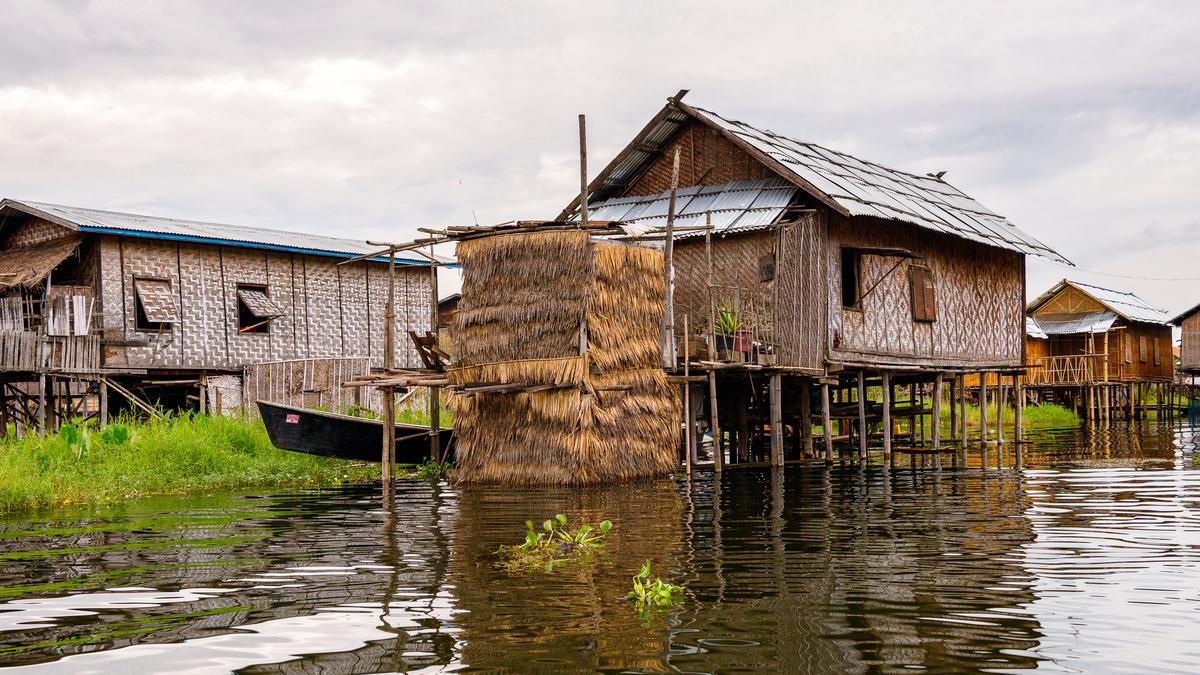What does bamboo remind you of? In cities today, its use is mostly restricted to outdoor furniture or for temporary structures like pavilions and gazebos. It is perceived as not as strong and durable as more ‘permanent’ forms of building. But if you’ve been to north-east India, you may encounter bamboo structures that are as strong, or even stronger than ‘pukka’ houses.
Traditional bamboo houses on stilts, along the Brahmaputra in Assam.
| Photo Credit:
Getty Images/iStockphoto
With dense forests and rivers, bamboo is plentiful in Assam. A fast-growing material, it has a low carbon footprint. But its popularity here is not just because of its abundance. Lightweight bamboo structures have helped these regions cope with two difficult climate phenomena: earthquakes and floods.
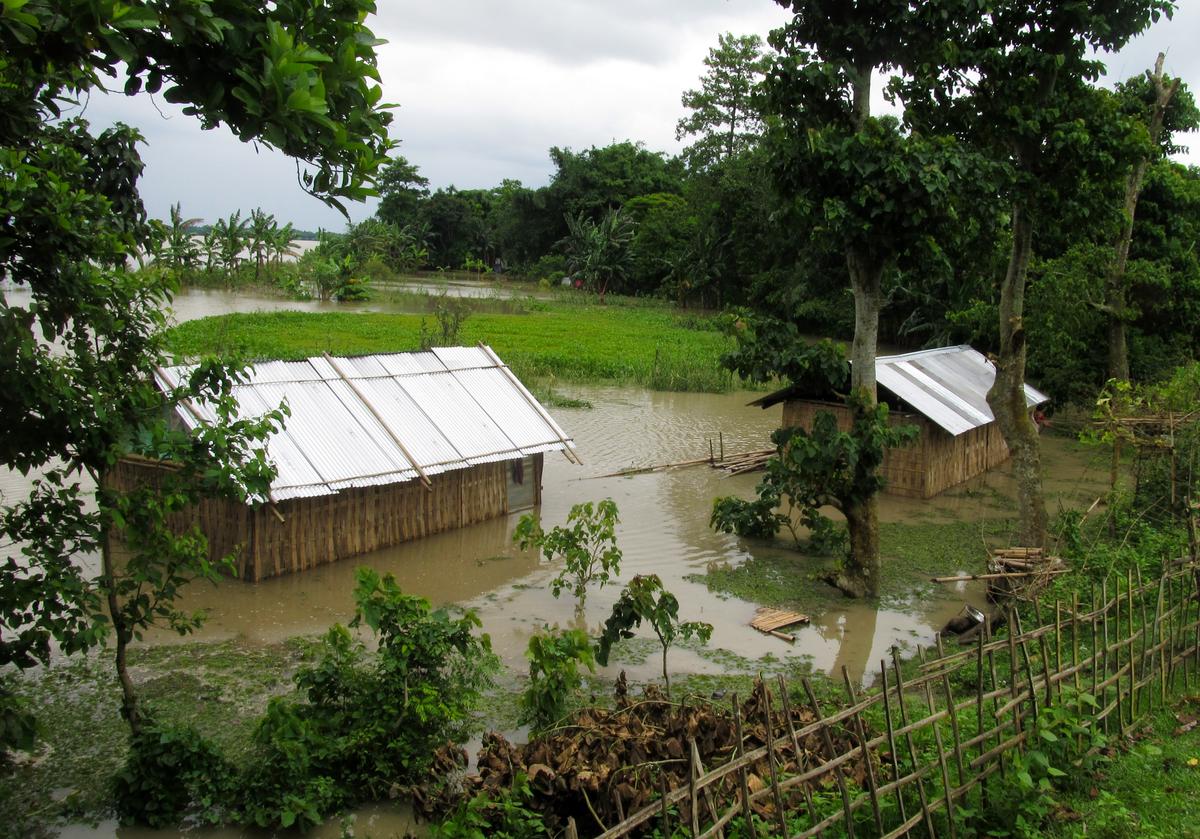
Submerged houses in Assam’s flood-ravaged island Majuli.
| Photo Credit:
Getty Images/istock
Assam lies in a seismic hazard zone and has witnessed several intense earthquakes. Additionally, it is often hit by floods. While the north-eastern States have a variable climate depending on their altitude, Assam has hot and humid climate with warm summers. And local houses have found innovative ways to respond to this.

A Mising woman at work outside her house (Chang Ghar) in Bokakhat district, Assam.
| Photo Credit:
Ritu Raj Konwar
The Chang Ghar is a traditional house of the Mising community, made of bamboo and raised on stilts of up to 10 feet or more above the ground. The houses were developed by this community, who have historically lived close to rivers in low-lying and flood prone regions, and their design is a response to the local conditions. The elevated houses kept away the flood water, and the walls made of the interwoven mats help the house ‘breathe’, keeping the interiors comfortable in the hot and humid environs of Assam.
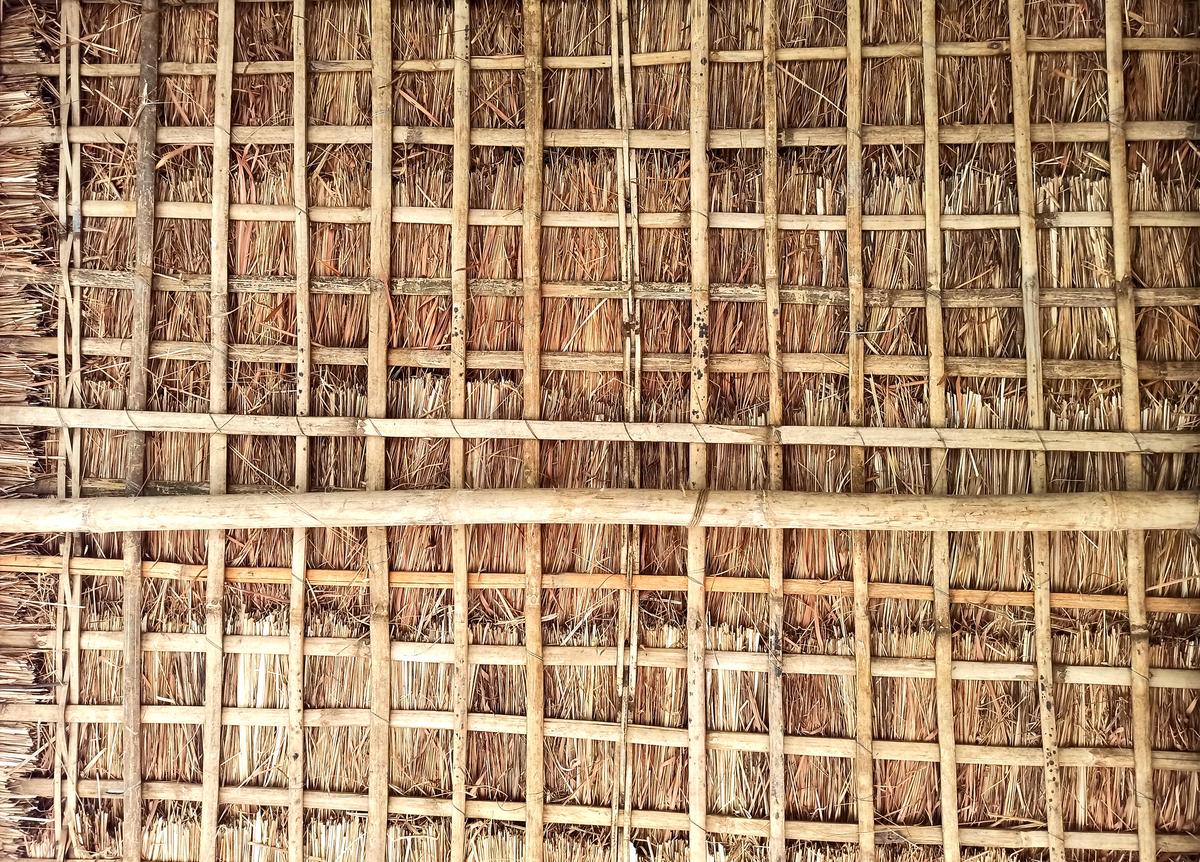
Thatch and bamboo roof pattern of Assam.
| Photo Credit:
Getty Images/istock
In 2017, Delhi-based organisation SEEDS (Sustainable Environment and Ecological Development Society) collaborated with local artisans and architects to develop a sturdier version of the Chang Ghar in the low-lying area of Golaghat for the Mising community. Their design used bamboo stilts and followed the traditional model, but with some modern additions like a concrete base for the stilts and deeper foundations. The houses helped the residents cope with future floods, underscoring the importance of using local knowledge with contemporary technology.
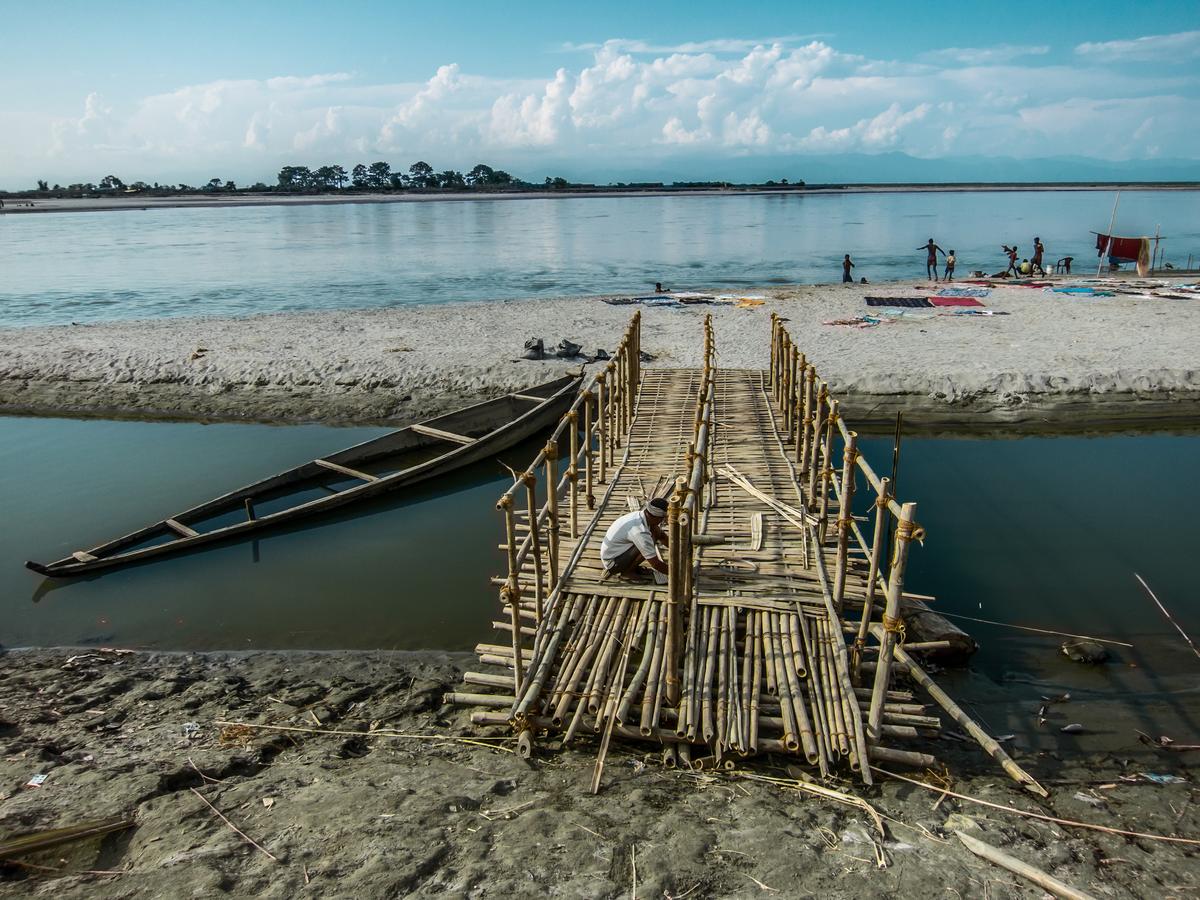
Bamboo as construction material for a bridge across a sandbank on the Brahmaputra in the town of Dibrugarh, Assam.
| Photo Credit:
Getty Images/istock
While the Chang Ghar houses were simple and fulfilled basic needs, local architecture was also developed for more elaborate needs. Ikra or Ikora houses were single-storeyed houses that used bamboo and local ‘ikora’ reeds as a primary building material along with brick and stone. Eventually, these houses came to be known as a distinct style ‘Assam-type architecture’, and became popular all around the region.
In an analysis of Assam-type houses, Avnibesh Sharma, a heritage enthusiast who writes about Assam’s forgotten past writes, after the Great Earthquake of Assam in 1897, experts were brought in to propose improvements. On studying the local environment and materials, they suggested a method of building that uses lightweight, bamboo structural members, ikora reeds, along with earthquake-resistant techniques developed in Japan. These willowy structures would stand even when ‘pukka’ houses may collapse. The buildings gradually became more elaborate with colonial influences like verandas, porches and gabled roofs, and are seen in many public buildings in neighbouring Shillong too.
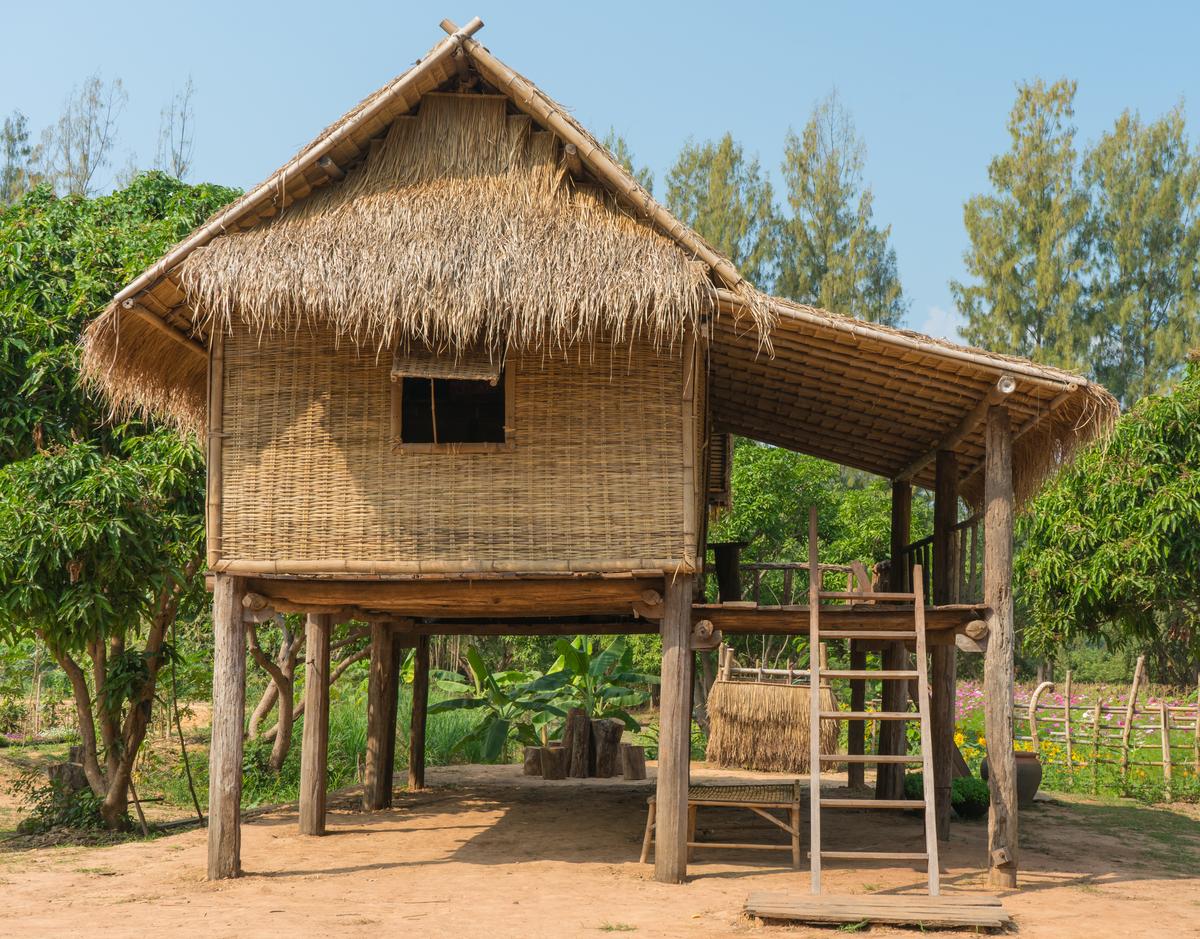
So, how does bamboo work well during earthquakes?
According to a study from IIT Guwahati, the Assam-type house can withstand lateral deformation because of the flexible joints of the framing system of the house, and the lightness of the infill walls made of Ikra reed. The bamboo joints allow for some swaying, and the absence of rigid joints helps the building stand. Cross-braced timber framed structures are common across the world as a response to earthquakes. In a previous instalment of this series, we looked at ‘Dhajji Dewari’ houses of Himachal Pradesh which fulfil a similar purpose.
Bamboo is a common material among other north east states too. “As part of our work, we travelled to remote villages in Manipur, Meghalaya, Assam and Tripura and studied bamboo house typologies. The common features were smaller, cosy rooms and a comfortable indoor environment. The skin of the house made of woven bamboo mat makes it breathable,” shares Avneesh Tiwari, founder of Mumbai-based firm, atArchitecture. The firm designed the North-East Pavilion at the Surajkund Craft Fair in 2023.
The pavilion was a tribute to bamboo, and this permanent exhibition space showcases the eight North Eastern states of India as part of the annual fair to promote Indian handicrafts and provide a platform for artisans. The bamboo pavilion was the result of collaborating with local artisans of the region who worked with the firm on the construction details and craftsmanship.
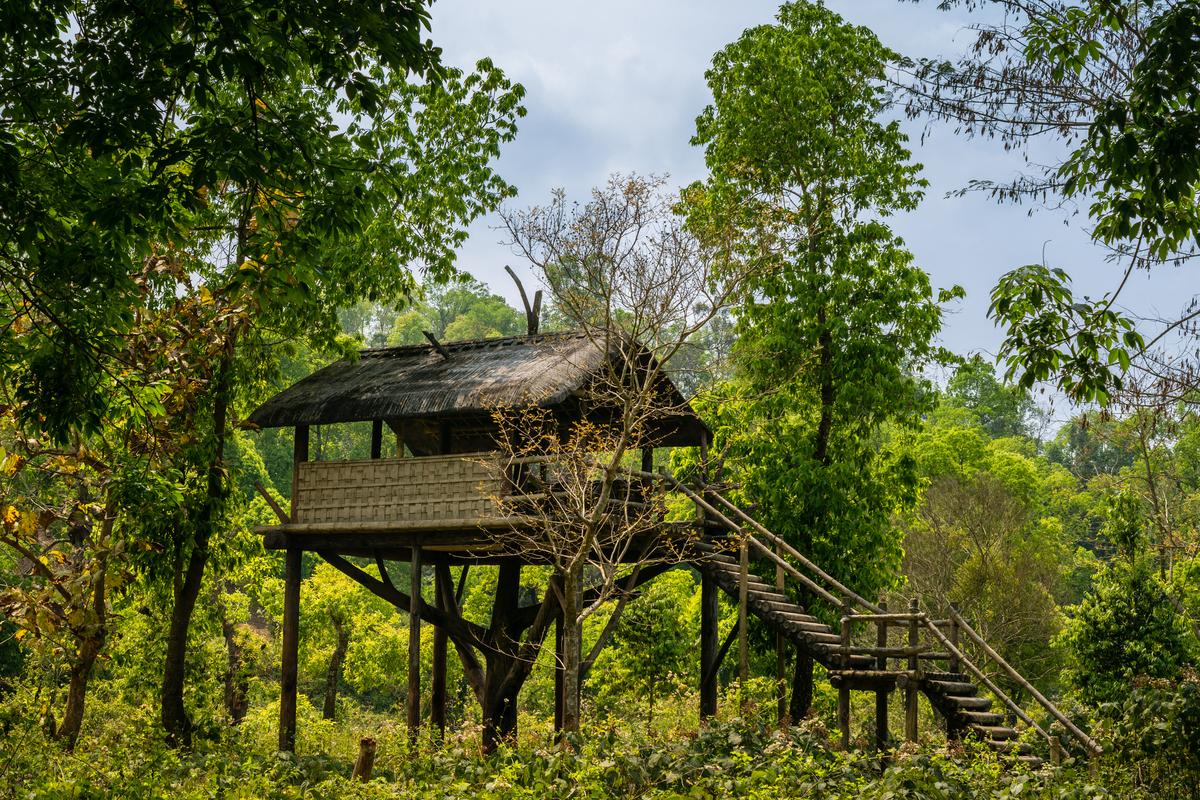
A watchtower made of bamboo, in Assam.
| Photo Credit:
Getty Images/iStockphoto
“In the absence of professional architects and builders, locally built structures reflect the collective wisdom passed down through generations,” says Avneesh. To adapt traditional techniques to modern long-span structures, he adds that India still needs to invest in skills development and training to make it mainstream.
Unlike city buildings that are built by architects and engineers, these traditional structures are crafted by artisans and the local community artisans drawing on generations of wisdom. And their ingenuity can continue to influence modern architecture in its quest for sustainability.
(This is the fourth of a series on finding inspiration in climate responsive architecture around the world.)
The writer is an architect and freelance editor.
Published – October 10, 2024 02:56 pm IST


